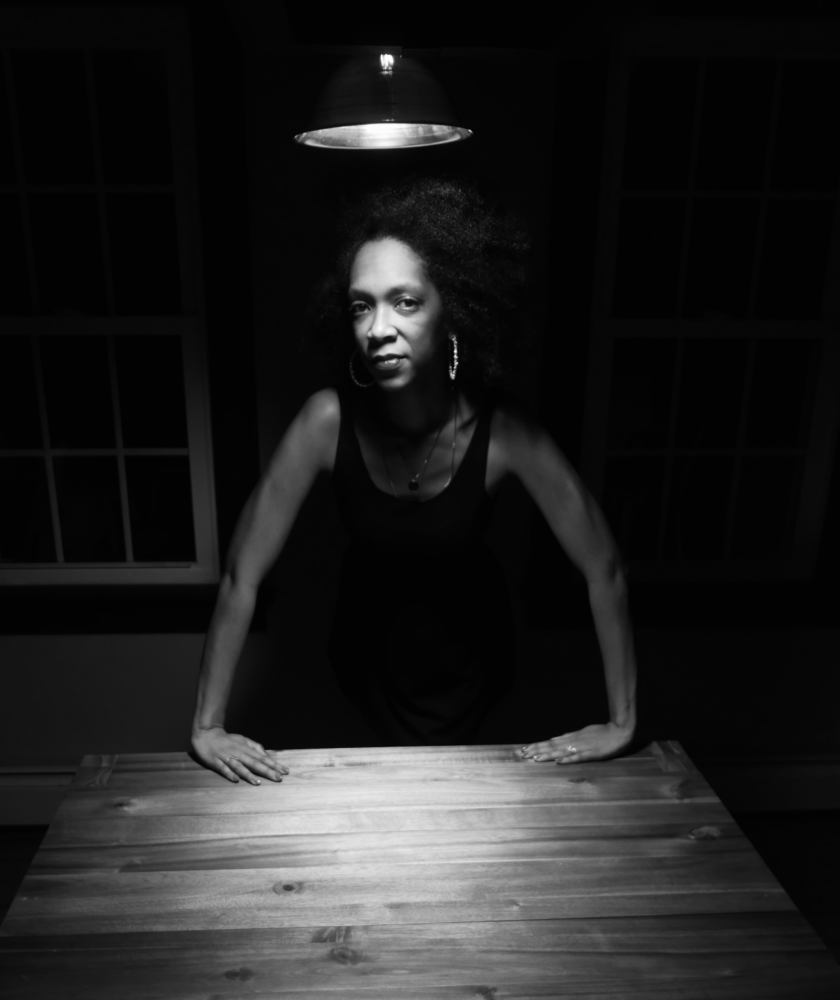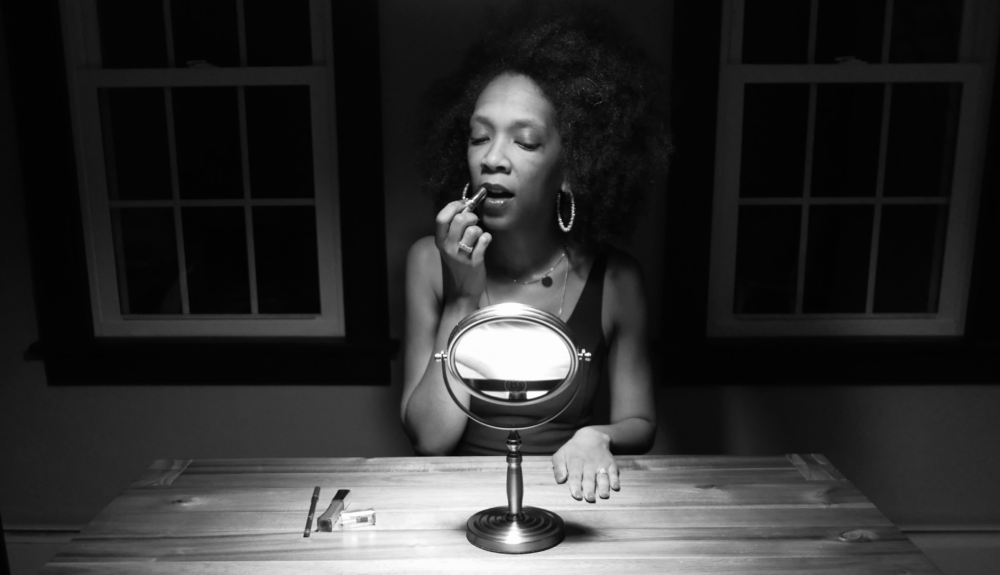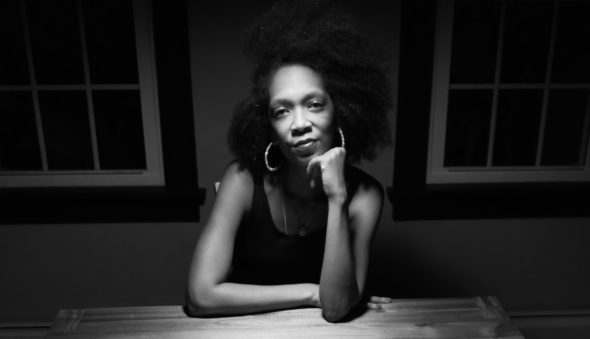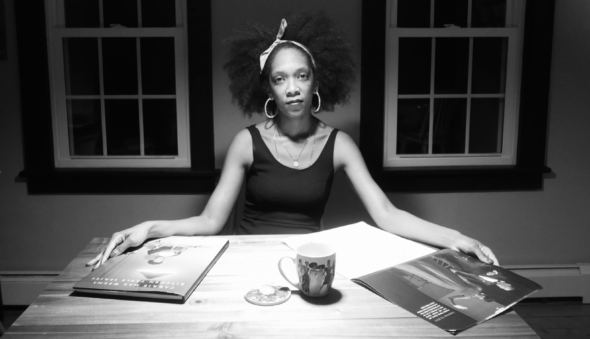Writing and research from Shatima Jones’s interdisciplinary seminars, “(De)Tangling the Business of Black Women’s Hair” and “Black Experiences in Literature, Movies, and Television,” published in honor of Black History Month, 2021.
Editor’s Note, A Seat at Our Table

Editor’s Note
In my courses, “(De)Tangling the Business of Black Women’s Hair” and “Black Experiences in Literature, Movies, and Television,” we grapple with conceptualizations of race and ethnicity, gender, sexuality, social class, and how these identifications intersect to structure our life chances and experiences. We also explore the role of place and space in shaping those experiences, and how Blackness in all its complexities and beauty is represented in novels, films, and television. Under normal circumstances, we gather around a table, much like the one featured in the photo.
Our classroom is sort of a processing center for examining how our individual lived experiences intersect with academic theorizations of race, literature, popular culture, and the media. It is an inclusive intellectual space, where everything counts as a data point, a valid perspective, and a useful framework through which we can better understand the topic at hand. My perspective as a Black woman professor, and the striking diversity of the students who enroll in my courses, structure our learning environment. But it is more that everything about the student, as much as they are willing to share, has a place and is necessary to our class discussion.
Students in these courses consistently express that they “feel seen” in ways they had not before in the classroom. Some students who discuss traumatizing racist encounters they have experienced, or who identify themselves as queer, bisexual, or gender nonconforming, preface their remarks by signaling that this is privileged information that they have seldom if ever shared with classmates. In turn, their peers show empathy and support for one another. Through applause, hugs, and sometimes tears, we then work to situate their individual experiences in a macro, structural context.
Since we all share and are made vulnerable, students are able to hear, see, and appreciate each other for the important and courageous work they are doing. We can engage with debates regarding Blackness, race relations, power and inequality in respectful and meaningful ways that bring about new and more nuanced understandings. We are able to recognize and bond over our common experiences. And our differences help us come to new realizations, including of our own blind spots, whether to our own privileges or to the struggles of others.
In the past year, the need to have the kinds of intellectual engagement, conversations, and spaces I have described above has taken on even greater urgency and significance. A Seat at Our Table is another space that I, in partnership with Confluence, have created where students can share their thoughts, insights, and original research on topics related to Blackness with a broader audience.
*
Aesthetically, A Seat at Our Table, is inspired by the words and political aspirations of Shirley Chisholm, the music and lyrics of Solange, and the photography of Carrie Mae Weems.
Chisholm, the first African American woman in Congress and the first woman and African American to seek the nomination for president of the United States famously said, “If they don’t give you a seat at the table, bring a folding chair.” Her words invoke the image of white cis-gender men monopolizing positions of power and the spaces where important decisions are made. It is also a call to action for all of us who do not identify as such to push past our feelings of marginalization and exclusion and make provisions for ourselves. To not wait for permission to enter those spaces and to insert ourselves into those conversations. To upend the balance of power.
Solange’s masterpiece album A Seat at the Table (2016) celebrates the beauty, struggle, glory, and triumphs of Black experiences, especially Black womanhood. It captures the moods of Blackness. The title of her album, to me, is an endorsement of the brilliance that can be created when Black women make space to tell our stories and speak our truths. This theme, woven throughout the album, is underlined in her anthem, “F.U.B.U. (For Us By Us).” Alternatively, the title reads like a declaration of Solange’s well-established place at the table, where she invites us to listen to her journey, relate to her experiences, and participate in a conversation with her.
In the stunning photographic book, Kitchen Table Series, Carrie Mae Weems makes defiantly evident that not only is there a seat for her at the table–she owns the table. Weems is at the center of every photo in the series, in which the setting is the intimate and social space of her kitchen table. As people come and go from her table, we see the various roles she plays, the evolution (and even dissolution) of her relationships, and her journey of self-discovery. This, as well as the setting being held constant, gives the sense that the world may pass through her space, but it remains undoubtedly hers to dwell in and fully express a range of emotions. By keeping some things simple (black and white photos, the setting constant), Weems masterfully focuses our attention to her facial expressions and body postures to tell the complex stories of Black womanhood. I usually pass Weem’s book around in class, but remote learning does not allow that. I humbly recreate several photos from her book as part of this special issue of Confluence.
And now I proudly invite you to take A Seat at Our Table. In this special issue on Confluence, you will read the final research papers of some of the students in my courses this past fall, who excitedly revised them into articles over the winter break. Collectively, they cover the following themes: Black Mothers and Boss Ladies on the Screen; Gazes on Black Hair and Beauty; Black Aesthetics and Activism; Blackness on Film: Tropes, Traumas, and Resistance.
Thank you to Allyson Paty, Confluence staff adviser, who without hesitation agreed to my idea for this project and worked hard to bring my vision to fruition. Allyson, your support and enthusiasm throughout this process were incredible. Thanks to Aliya Jones (BA ’22), Confluence editorial and archival assistant, for production support. Thanks to Colin Jerolmack for the photography, and for always encouraging me to be the kind of academic and teacher that I want to be. Thank you and congratulations to the awesome student-authors for your hard work and contribution to this issue!
Week 1: Black Mothers and Boss Ladies on the Screen
- Introduction by Shatima Jones
- “The Black Women Boss Ladies of Shondaland”
by Cheyenne Porcher - “Black Motherhood on Primetime Television”
by Courteney Celestin - “Laboring Women: Black and White Beauticians in Film” by Ava Marshall
- “The Liberation of Black Women through Cinema” by Kendra Brown
Week 2: Gazes on Black Hair and Beauty
- Introduction by Shatima Jones
- “Modeling Race: Black Models on the High Fashion Runway” by Netanya Ronn
- “Redefining Black Beauty: Hair-Care Packaging” by Tatyana Tandanpolie
- “Blackness and Colorism in Kenya Barris’s Productions” by Britney Agyen
- “Pelo Bueno/Pelo Malo” by Melany Canela
- “White Parents, Black Hair” by Rachel Goulston
Week 3: Black Aesthetics and Activism
-
- Introduction by Shatima Jones
- “Fashion Activism” by Taylor Haynes
- “Aretha Franklin’s R-E-S-P-E-C-T-ability Politics” by Kayla Perez
- “Redefining Femininity” by Nina Ahmadi
- “Flower Boy” by Sean Salmons
Week 4: Blackness on Film: Tropes, Traumas, and Resistance
- Introduction by Shatima Jones
- “Breaking the Stigma” by Andrea Maia
- “Black Trauma and Resistance in Film” by Cecilia Innis
- “The Magical Negro Trope in Literature and Film” by Sydney Cusic
- “Black Women and Liberation in Blaxploitation Films” by Louis Tambue
- “Portrayals of Black Masculinity in Paid in Full” by Michael Flom

